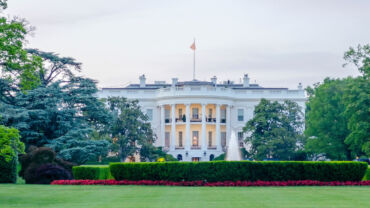Federal District Court Ruling in State of New York v. United States Department of Labor Concerning Department of Labor’s Final Rule on Association Health Plans, Questions and Answers Part Two (May 13, 2019)
Following up on its recent statement relating to the federal trial court decision vacating key provisions of the association health plan (AHP) regulations (see our Checkpoint article), the DOL has issued additional guidance in the form of four FAQs. (The regulations expanded the criteria for a group or association of employers to be considered an “employer” under ERISA, such that a plan sponsored by the group or association will be treated as a single ERISA plan.) The DOL’s statement permits employers participating in existing insured AHPs to keep their current coverage in force until the end of the plan year (or, if later, the contract term) and provides limited enforcement relief. The FAQs are intended to provide further clarification.
Q/A-1 clarifies that preexisting subregulatory guidance on the criteria for a group or association of employers to be considered an ERISA “employer” is unaffected by the court’s ruling. The FAQ refers to AHPs formed under preexisting guidance as “Pathway 1 AHPs,” while those formed under the regulations are “Pathway 2 AHPs.” Pathway 1 AHPs may not allow participation by working owners or establish commonality among employers based solely on geography. (These are elements of Pathway 2 AHPs specifically vacated by the court.) Q/A-4 refers Pathway 1 AHPs to existing advisory opinions for additional guidance on employer status for groups or associations (see, e.g., our Checkpoint article). Explaining that advisory opinions are not required, this FAQ suggests that AHPs with a particular need have an informal phone call with EBSA specialists as an alternative (or precursor) to the potentially time-consuming advisory opinion process. Contact information is provided, along with other recommended resources.
Q/A-2 specifies that Pathway 2 AHPs may not market to or sign up new employer members, but existing employer members can continue to enroll new employees upon special enrollment events and consistent with the plan’s eligibility terms. And Q/A-3 confirms that DOL enforcement relief extends through the remainder of the plan or contract year that was in effect at the time of the court’s ruling. It also references HHS’s corresponding enforcement policy, and notes that the agencies encourage states to adopt a similar approach.
EBIA Comment: These clarifications are helpful, and more information is available via the recommended resources. The FAQs do not provide instructions for finding relevant advisory opinions; these are available through the EBSA advisory opinions webpage (select ERISA § 3(5) in the Select a Reference Category drop-down menu). In any event, Pathway 2 AHPs and participating employers should watch for further developments. For more information, see EBIA’s ERISA Compliance manual at Section XIX.D (“Is There an ERISA Plan at the MEWA Level or at the Participating Employer Level?”). See also EBIA’s Health Care Reform manual at Section XIV.A (“Introduction and Understanding Small and Large Group Markets”), EBIA’s HIPAA Portability, Privacy & Security manual at Section XVIII (“Guaranteed-Availability and Guaranteed-Renewability Rules for Large Group, Small Group, and Bona Fide Association Plans”), EBIA’s Self-Insured Health Plans manual at Section III.D (“Who Can Sponsor a Self-Insured Health Plan?”), and EBIA’s COBRA manual at Section V.M.1 (“When Does ERISA Apply at the MEWA Level?”).
Contributing Editors: EBIA Staff.








